Gardeners and foragers have a lot of raw materials to work with. You can pick flowers in your garden for bouquet making or flower pressing, or you can harvest vines on a hike and craft homemade wreaths or gather plant materials to make homemade dyes. But if you love crafting and you’re looking for even more creative projects to try, you can also harvest plants and vines to make handwoven baskets.
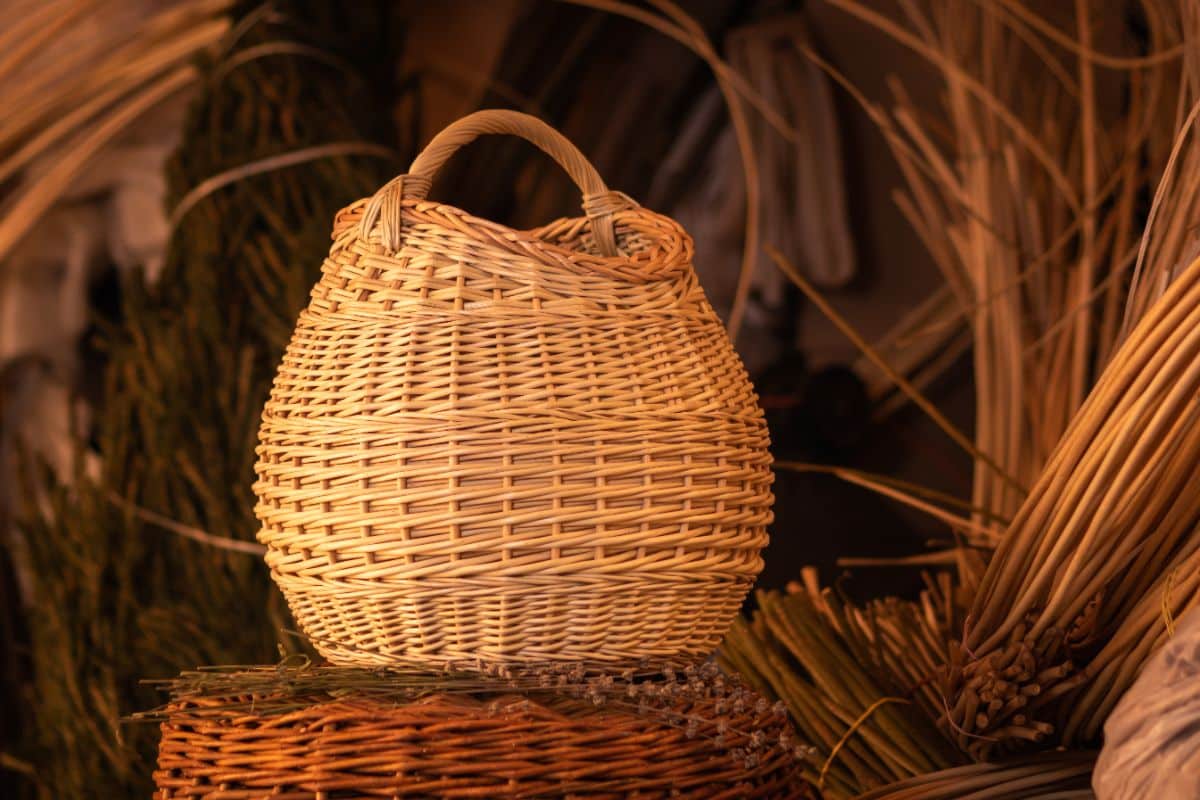
Basket weaving is an accessible art form that even children can enjoy. More advanced basket weaving patterns and styles can also hold the interest of experienced crafters and artisans. But if you forage your own basket weaving supplies, your finished basket can be even more personal and meaningful.
In this guide, you’ll find the best plants and vines to forage for basket weaving. Some of these plants can be grown in home gardens, while others are usually easy to find while foraging. Whether you want to weave in your summer garden or you’re looking for a cozy craft to try fireside this winter, basket weaving is a top choice for crafters of any skill level.
Jump to:
- 15 best plants to grow or forage for basket weaving
- 1. Willow (Salix spp.)
- 2. Oriental bittersweet (Celastrus orbiculatus)
- 3. Native grasses
- 4. Wisteria (Wisteria spp.)
- 5. Pine needles (Pinus spp.)
- 6. Rushes (Juncus spp.)
- 7. Japanese honeysuckle (Lonicera japonica)
- 8. Daylilies (Hemerocallis spp.)
- 9. Irises (Iris spp.)
- 10. Sweet corn (Zea mays)
- 11. Wild grapes (Vitis vinifera)
- 12. Kudzu (Pueraria montana)
- 13. English ivy (Hedera helix)
- 14. Blackberries (Rubus subg. Rubus)
- 15. Virginia creeper (Parthenocissus quinquefolia)
- Quick tips on foraging for basket-making materials
- Frequently asked questions
- Summary
15 best plants to grow or forage for basket weaving

In the list below, you’ll find plants and vines that are ideal for weaving. Even better, many of these plant selections are considered to be invasives in many areas. Using these invasive plants in your baskets is a great way to save on crafting supplies, and it also helps restore the environment and local ecosystem!
1. Willow (Salix spp.)
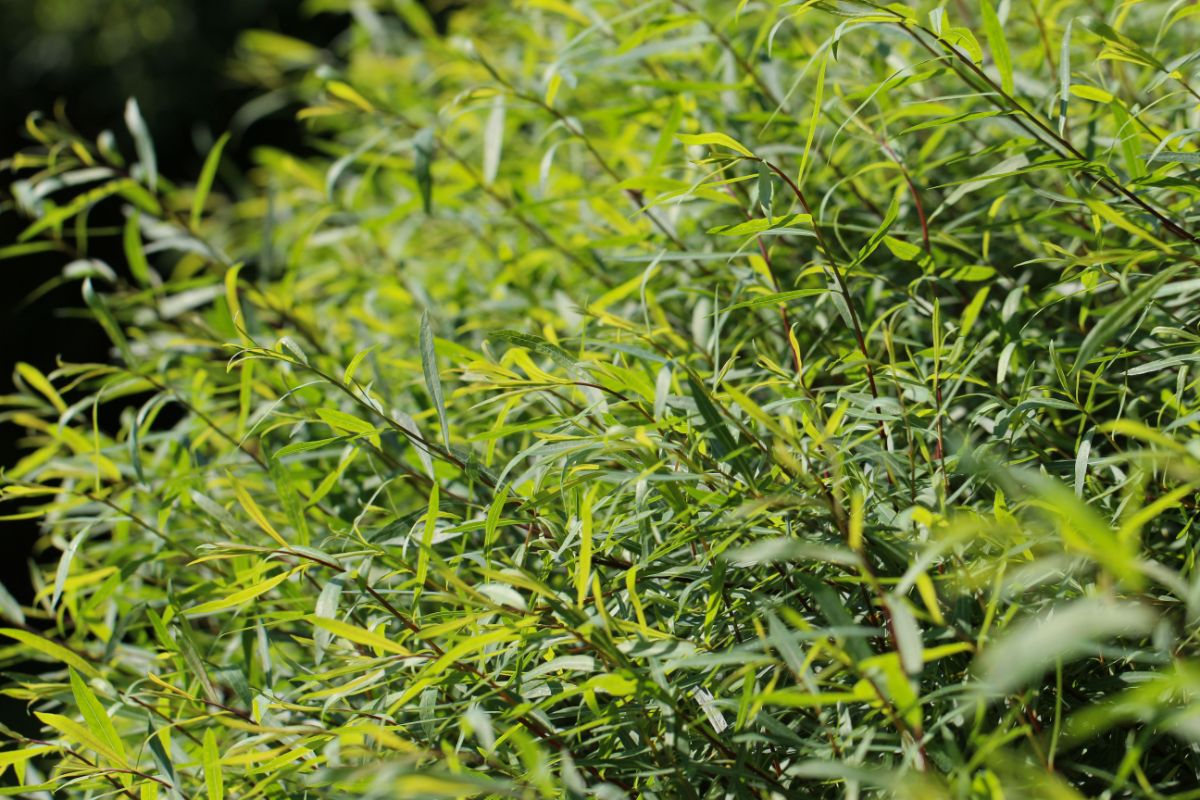
One of the most quintessential materials for basket weaving, willow is easy to come by, and it’s flexible enough that it can be worked into a variety of different shapes. Some varieties of willow are better suited for basket weaving than others, with Salix triandra, Salix purpurea, and Salix viminalis being some of the top choices for weaving. You can, of course, try out other willow varieties, but they may not be as pliable or they may be more prone to breaking.
Willow is a very versatile material for basket making, but it usually shrinks when used fresh. To avoid this, you can either use storebought willow branches, or you can dry wild-harvested willow and then re-soak it before weaving. Most varieties of willow thrive in wet soil, and their branches grow quickly, although it’s still best to harvest branches from older trees that will bounce back more readily than young saplings.
2. Oriental bittersweet (Celastrus orbiculatus)
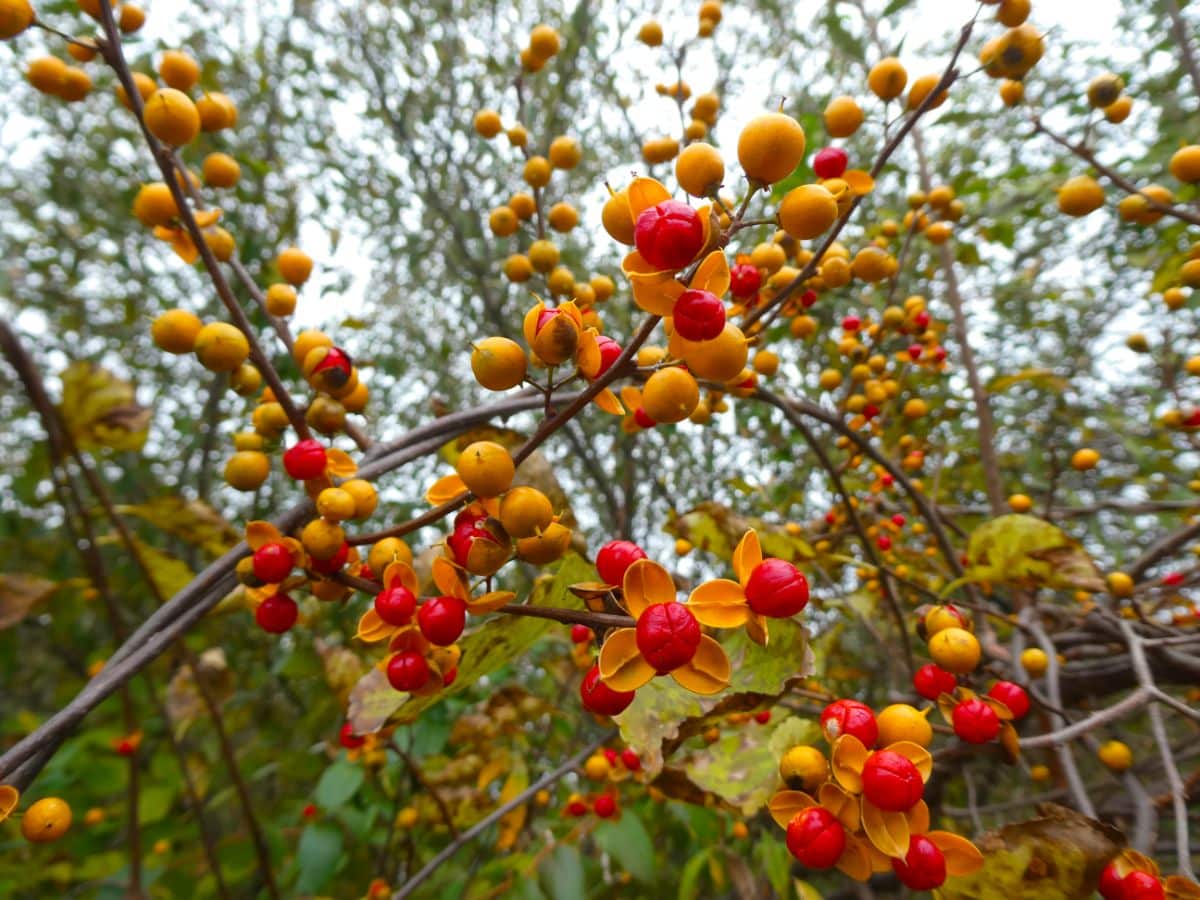
Oriental bittersweet is an invasive plant that can be very destructive in wooded areas and gardens. Left unchecked, bittersweet can girdle trees or even pull them down with its massive weight! However, if you happen to like basket weaving, you can put bittersweet vines to use by weaving them into your own basketry.
When harvesting bittersweet, select vines that are thin and pliable and no wider than your pinky finger. Also, only harvest bittersweet vines early in the season before they start producing berries. This will ensure that you don’t accidentally sow invasive bittersweet berries around while you're harvesting your basket materials!
Note: While oriental bittersweet is a pest, there is also an American bittersweet that is native to eastern North America. This plant is not invasive, and since it’s often outcompeted by oriental bittersweet, American bittersweet is becoming increasingly rare. For this reason, make sure you properly identify bittersweet plants before harvesting and only harvest oriental bittersweet varieties.
3. Native grasses
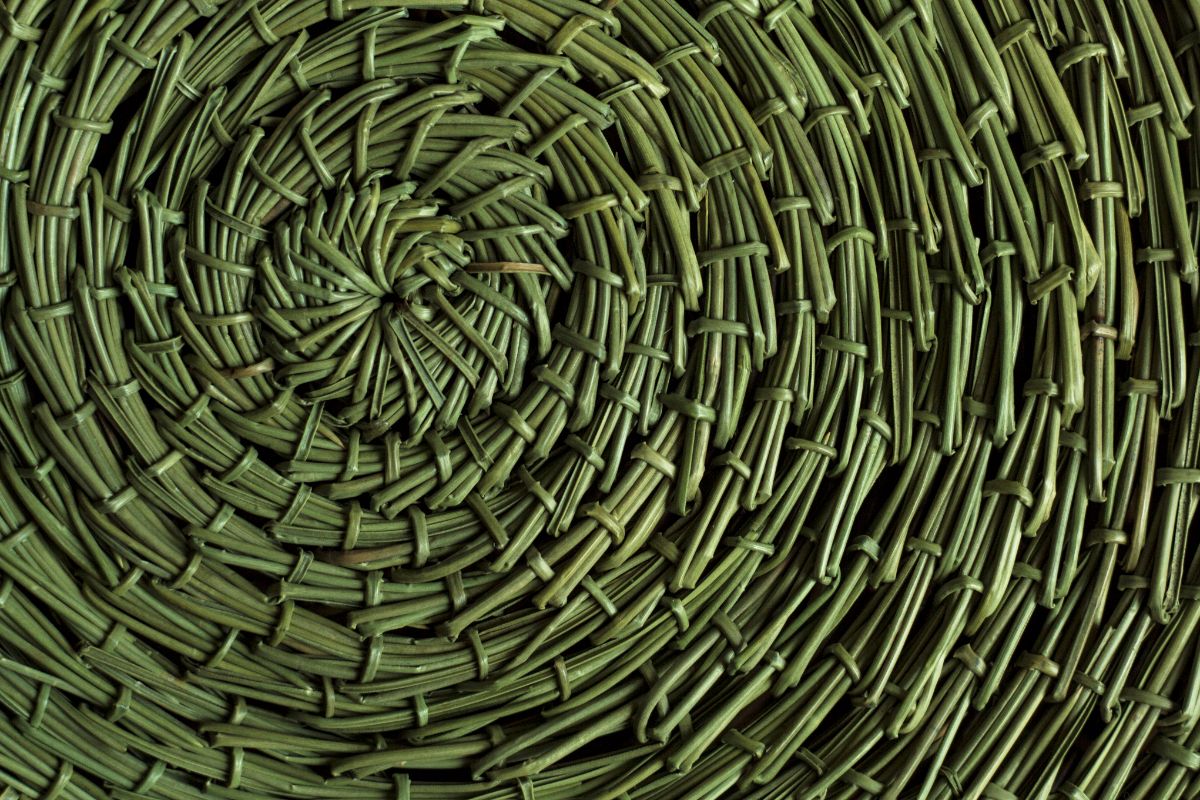
Native grasses are the most readily available basket weaving materials you can find, and there’s a good chance you already have some growing in your yard! However, while grasses are easy enough to find, some are better suited than others for basket weaving. Sturdy yet supple, grass varieties are best for baskets but feel free to experiment a bit to see if you can find a grass you like working with.
Before weaving, grasses should be allowed to completely dry out on a flat surface. This will reduce mold issues and also prevent the grasses from shrinking after weaving. Often coil weaving techniques are best suited for grasses, while wicker weaves work better with sturdier vines.
4. Wisteria (Wisteria spp.)
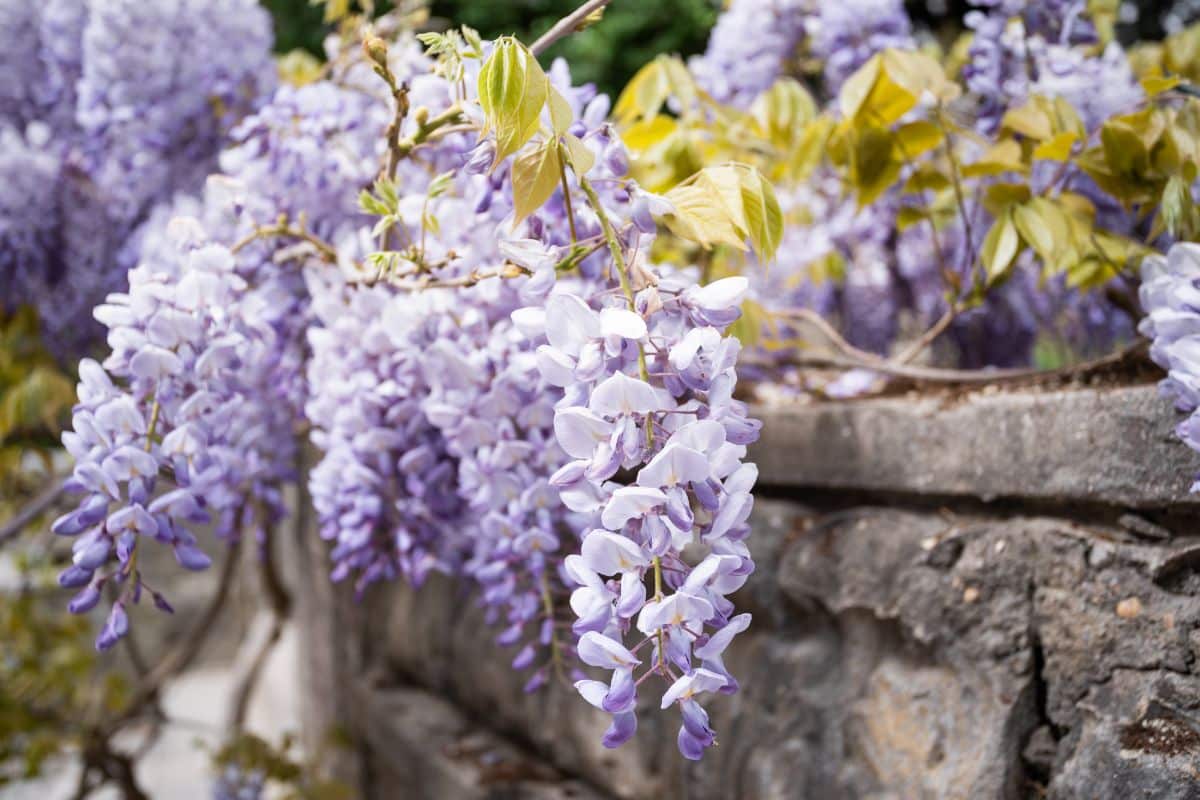
Wisteria is often grown as an ornamental in gardens, and its trailing clusters of bright purple petals are always a sure sign that spring has finally arrived. But certain varieties of wisteria can become invasive in some areas, and even non-invasive wisteria varieties can become massive plants in a short period of time. Turning these vigorous growers into homemade baskets is a smart way to save money on your basket weaving materials, and it can also help you clean up your garden!
Wisteria vines can be woven fresh or dried, although most weavers prefer to dry their vines before use. Fresh vines are plenty pliable, though, and they won’t shrink much after drying. Boiling wisteria will usually cause the bark to peel away from the vine; however, wisteria bark makes excellent cordage!
5. Pine needles (Pinus spp.)
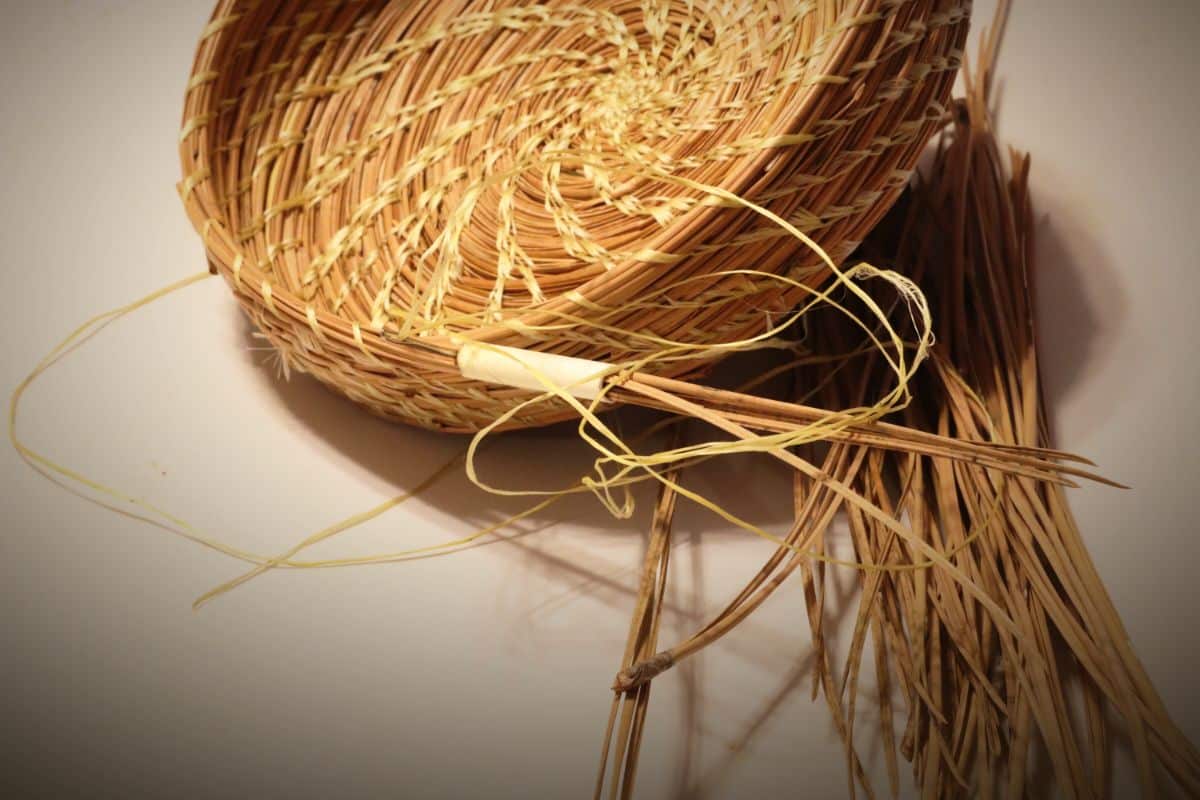
Pine needle baskets are an ancient craft form that was first created by the peoples of the First Nations in the Pre-Columbian era. Pine needle baskets can be made small or large, but they are primarily formed using the coiling technique, which is also useful for grass basket weaving. Pine trees with long needles, like longleaf pines and Ponderosa pines, are the most useful for pine needle baskets.
Pines with shorter needles will take longer to weave into basket form, but if that’s all that you have growing on your property, you can make it work. Pine needles should be soaked in boiling water, and their caps should be removed before you begin weaving. Applying shellac over your finished basket will help protect it and also make it easier to clean!
6. Rushes (Juncus spp.)

Rushes and grasses are often confused with each other as they both sport slender leaves and large seed heads. But when it comes to weaving baskets, many crafters prefer to work with rushes, which are both flexible and sturdy in basket form. Many different rushes can be used for basket weaving, but the top choice is the basket rush (Juncus textilis), which is native to California.
Rushes can be used green; however, you’ll get even better results if you split your rushes into thirds and then dry them before weaving. When you’re ready to begin, simply rehydrate your rushes and get to work! Rushes can be harvested throughout the year, but it’s important not to overharvest rushes and to only gather common varieties so there’s no risk of harming the local ecosystem.
7. Japanese honeysuckle (Lonicera japonica)
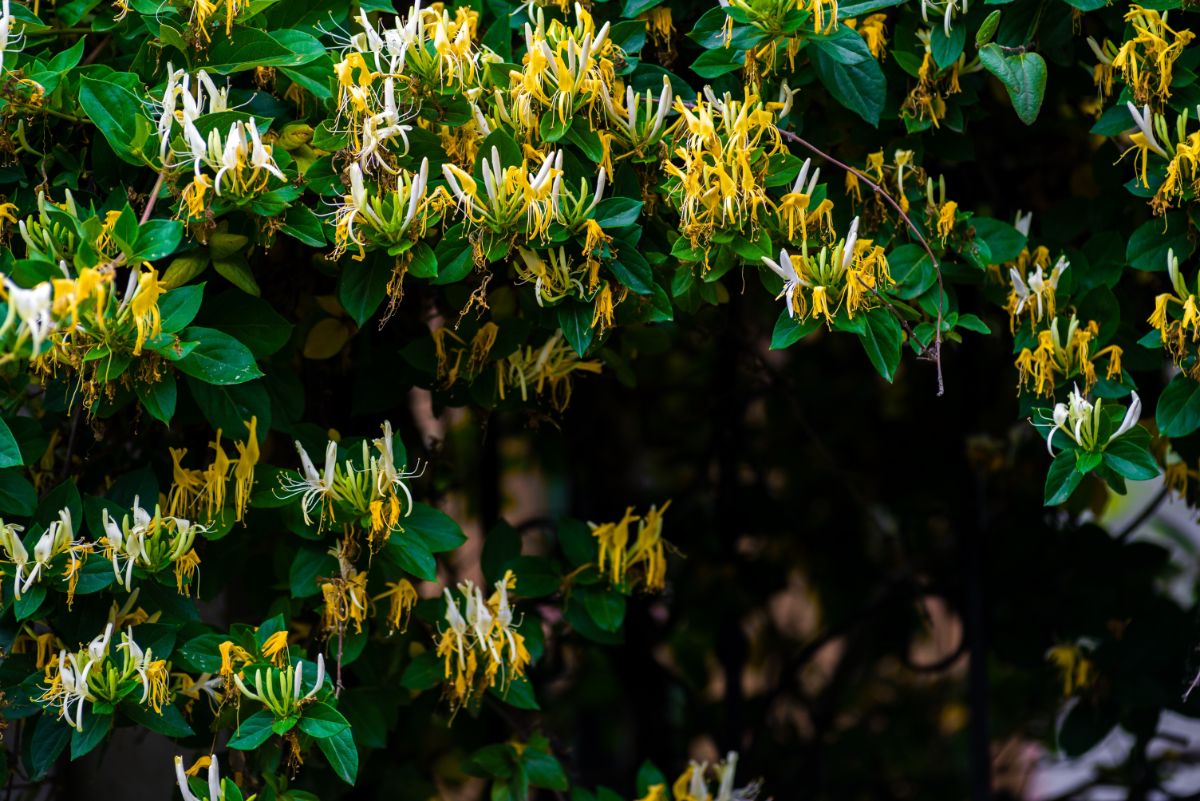
Like oriental bittersweet and some varieties of wisteria, Japanese honeysuckle can be invasive in many areas, and its vigorous growth will often outcompete native plants and reshape ecosystems. Pulling Japanese honeysuckle and burning it is one way to rid your garden of this invasive, but you can also put it to use by turning it into baskets. Japanese honeysuckle can be differentiated from other honeysuckle varieties by its yellow and white flowers and its vigorous, vining growth habit.
Like most other vining plants, Japanese honeysuckle should be harvested for basket weaving in fall or winter. At these times of the year, honeysuckle vines will be bare of leaves, making it much easier to see the vines you’re working with, and the vines will be less likely to snap too. If you can’t use your honeysuckle vines right away, store them in a coil in a cool, dry place and out of direct light.
8. Daylilies (Hemerocallis spp.)
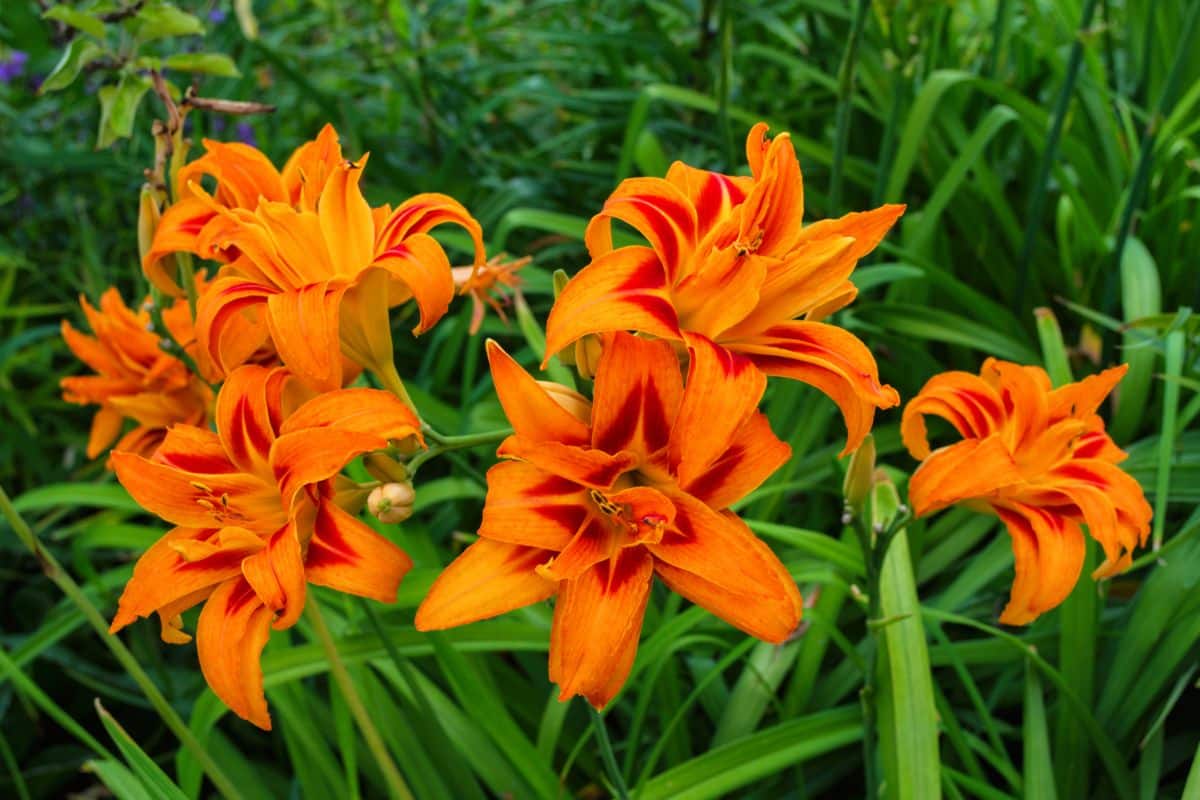
Daylilies are popular ornamental plants to grow in shade gardens, and their flowers and tubers are also edible and delicious. But if you want to get even more use out of your daylilies plants, you can also turn them into an assortment of homemade baskets for gathering eggs, collecting knickknacks, and so much more. Daylilies are actually native to Asia, but they’ve become naturalized in many other areas, which means you can often forage them in the wild if you don’t already have them growing on your property.
For basket weaving purposes, it’s daylily leaves that you want, and you can either gather them fresh during the growing season or harvest them in fall when the plant begins to die back. For fall harvesting, it’s best to wait until the first frost causes the plant to begin to wilt but before the leaves dry up. Then, just clip away as many daylily leaves as you want and dry them thoroughly before beginning your basket!
9. Irises (Iris spp.)
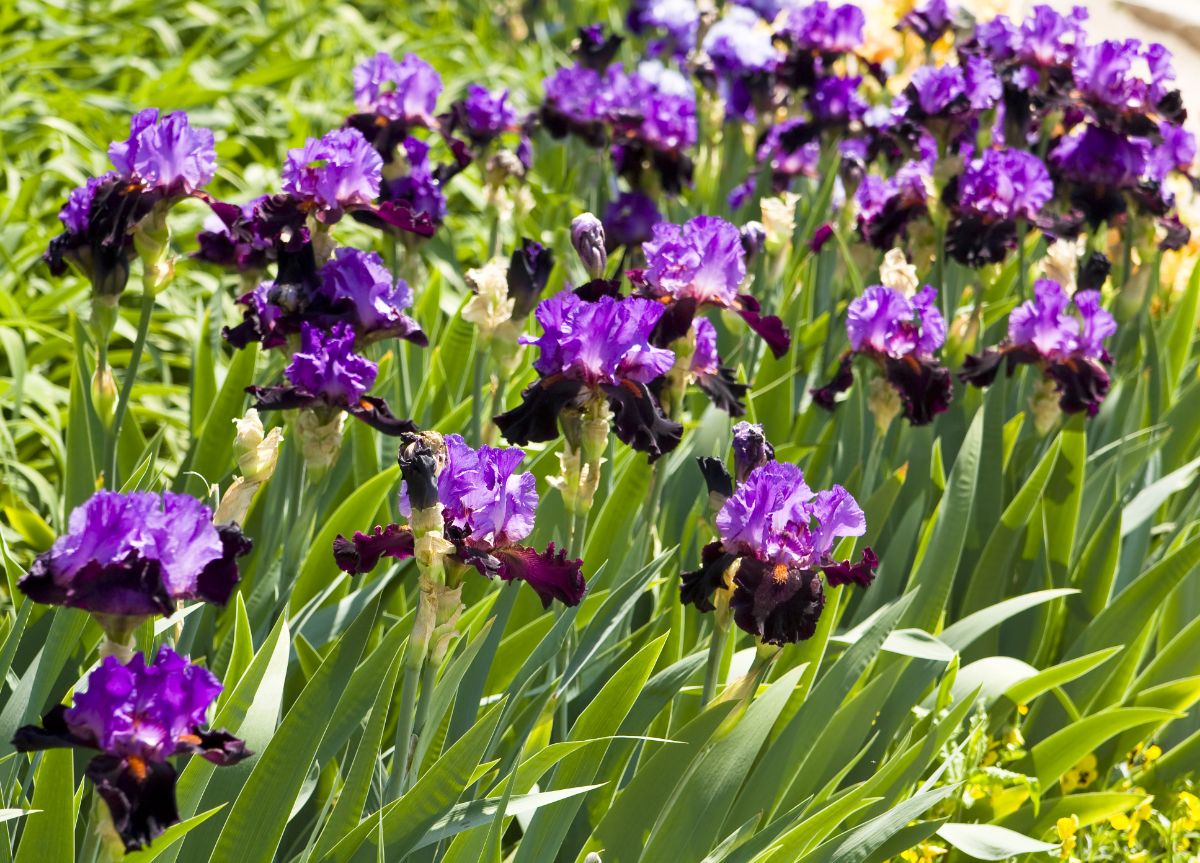
Just like daylilies, irises are also useful for basket-making, and their leaves can be harvested throughout the growing season. However, waiting until fall to pick iris leaves is even more efficient since you’ll be gathering your craft supplies and cleaning up your garden at the same time! As with daylilies, iris leaves should be dried before weaving.
Some irises have longer leaves than others, so if you’re growing plants specifically for weaving purposes, you may want to seek these varieties out. Tall bearded irises (Iris gemanica) are one popular choice since they’re easy to find and even easier to work with. For even more options, you can try weaving irises, grasses, and daylilies together, or you can experiment with each of these pliable weavers to discover which materials you like working with best.
10. Sweet corn (Zea mays)
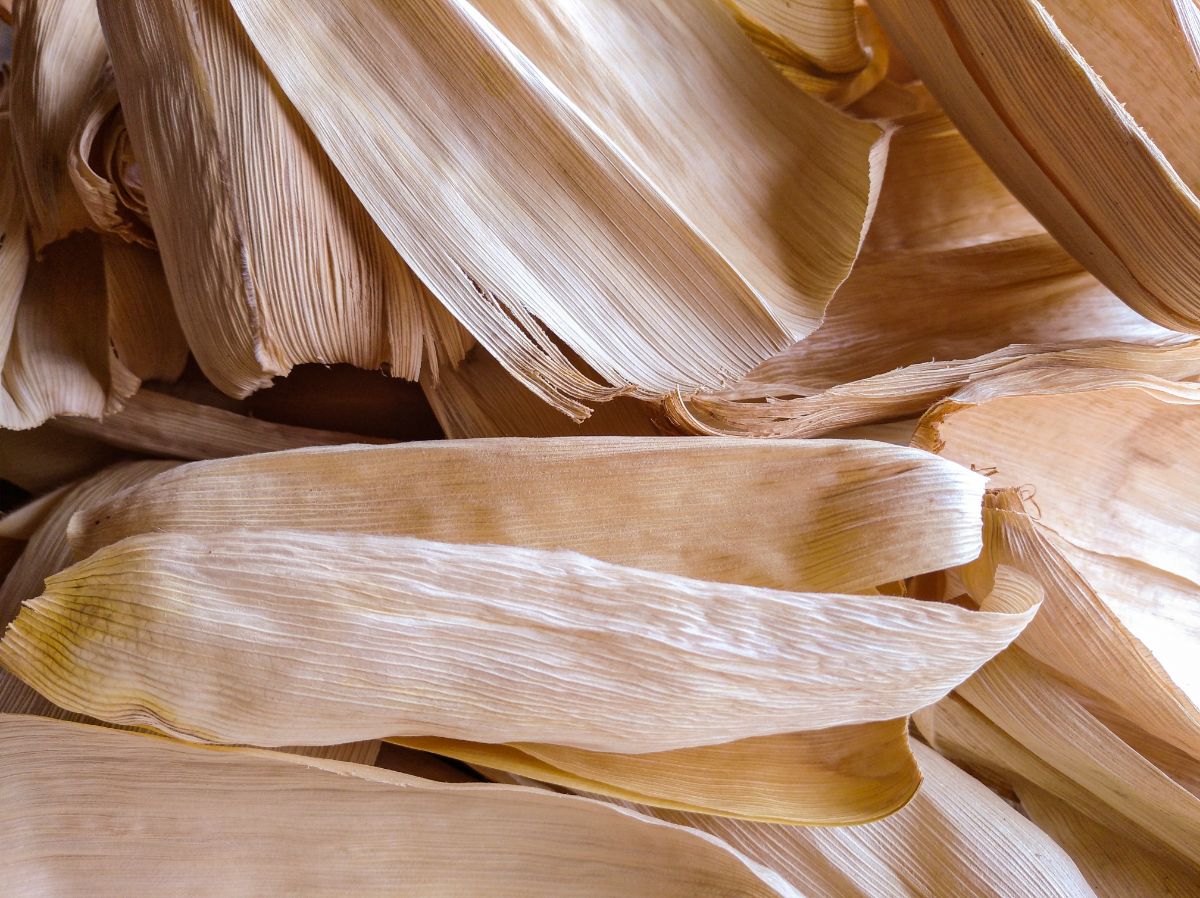
Not everyone loves foraging for craft materials but if you don’t have a very large garden, you may not have the space to intentionally grow basket weavers like irises and daylilies. However, if you keep an edible garden, you may already have basket-weaving materials on hand. After all, corn husks have been used for generations to make dolls, wreaths, and, of course, baskets!
Corn husks can be gathered from dried cobs, or you can simply collect husks when shucking the corn from your garden (or the local grocery store!) After that, allow the husks to dry fully and then rehydrate them with some water for about 10 minutes. Corn husks can be worked into a variety of basket shapes, but you’ll get a more uniform weave if you separate the wider husks from the narrow husks before you get started.
11. Wild grapes (Vitis vinifera)
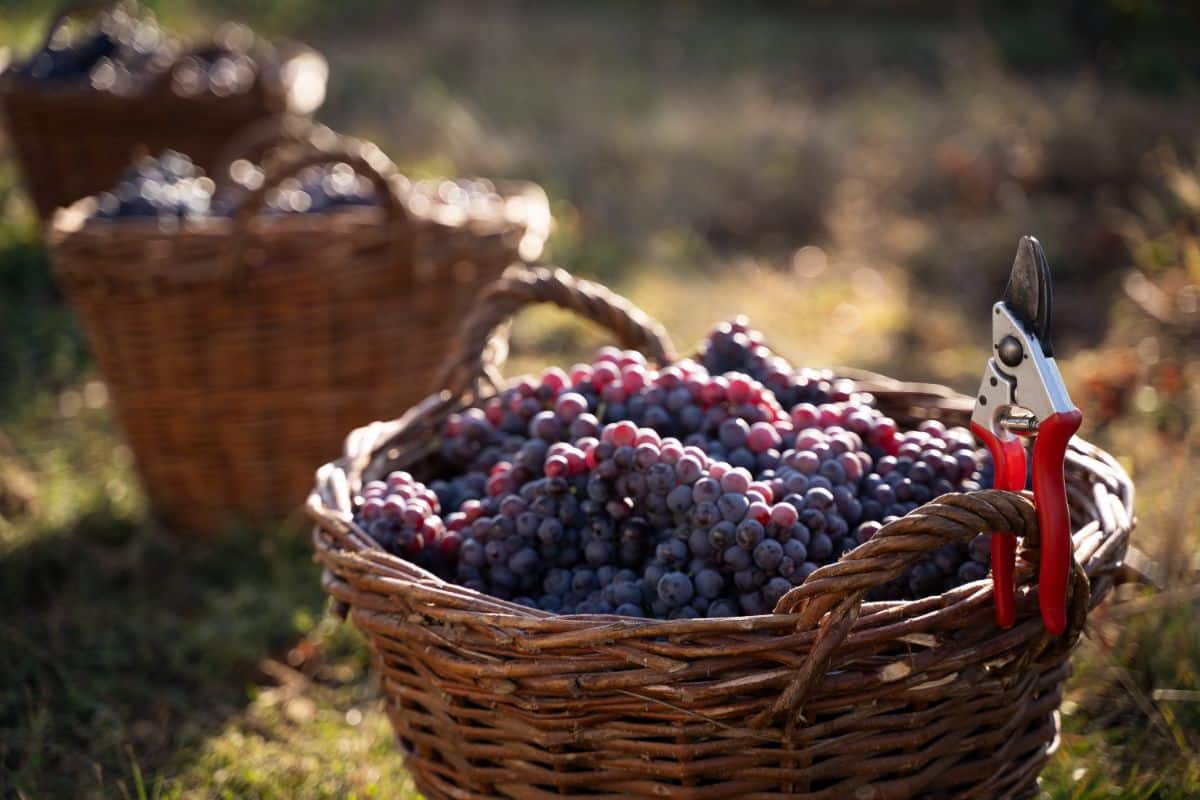
Grapevine baskets are about as classic as they come, and they can be made out of wild grapes foraged from the woods or grapevine cuttings from your own arbor. One of the great things about working with grape vines is that are incredibly sturdy materials, which make even stronger baskets. Grape vines can also be easily worked into basket handles -- an impossible feat for some of the other plant materials on this list.
If you’re harvesting grape vines in the wild, be careful when pulling vines free from trees. Grape vines and other climbing plants can attach themselves pretty firmly to tree branches, which can be a hazard if those branches aren’t firmly attached to the tree! Often, there is no need to soak grape vines before you begin weaving, as they will stay pliable for weeks after harvesting.
12. Kudzu (Pueraria montana)

Kudzu is another destructive invasive plant that can wreak havoc in ecosystems. Kudzu was actually intentionally planted in the southeastern United States in the 1930s by the Civilian Conservation Corps and Soil Erosion Service in hopes that it would serve as livestock fodder and prevent erosion. However, kudzu’s rapid growth resulted in the plant getting out of hand quickly, and today, it’s a major nuisance plant in many areas of the globe.
Luckily for basket weavers, kudzu vines make fine weaving materials, and gathering them from the wild can help combat this invasive invader. Kudzu vines consist of woody climbing vines and runners, but many weavers prefer to work with kudzu runners as they are more flexible and easier to harvest. If you want to use kudzu for weaving, gather your materials in winter, after the first hard frost.
13. English ivy (Hedera helix)

English ivy is a common plant that’s often used as a groundcover, although it’s grown as a houseplant too. But if you’ve ever worked with English ivy outdoors, you know this plant can spread, and it can become invasive in many areas. When English ivy escapes into the wild, it can pull down entire trees or damage masonry with its tough root system.
While English ivy can certainly be a hassle to deal with, this vining plant is also useful for basket weaving. English ivy can be harvested throughout the year, but it’s best to cut long sections of the vine if possible. A very versatile weaving material, English ivy vines can be coiled, braided, or twined together, and many crafters use raffia in conjunction with ivy to make charming baskets, trivets, and homemade table mats.
14. Blackberries (Rubus subg. Rubus)
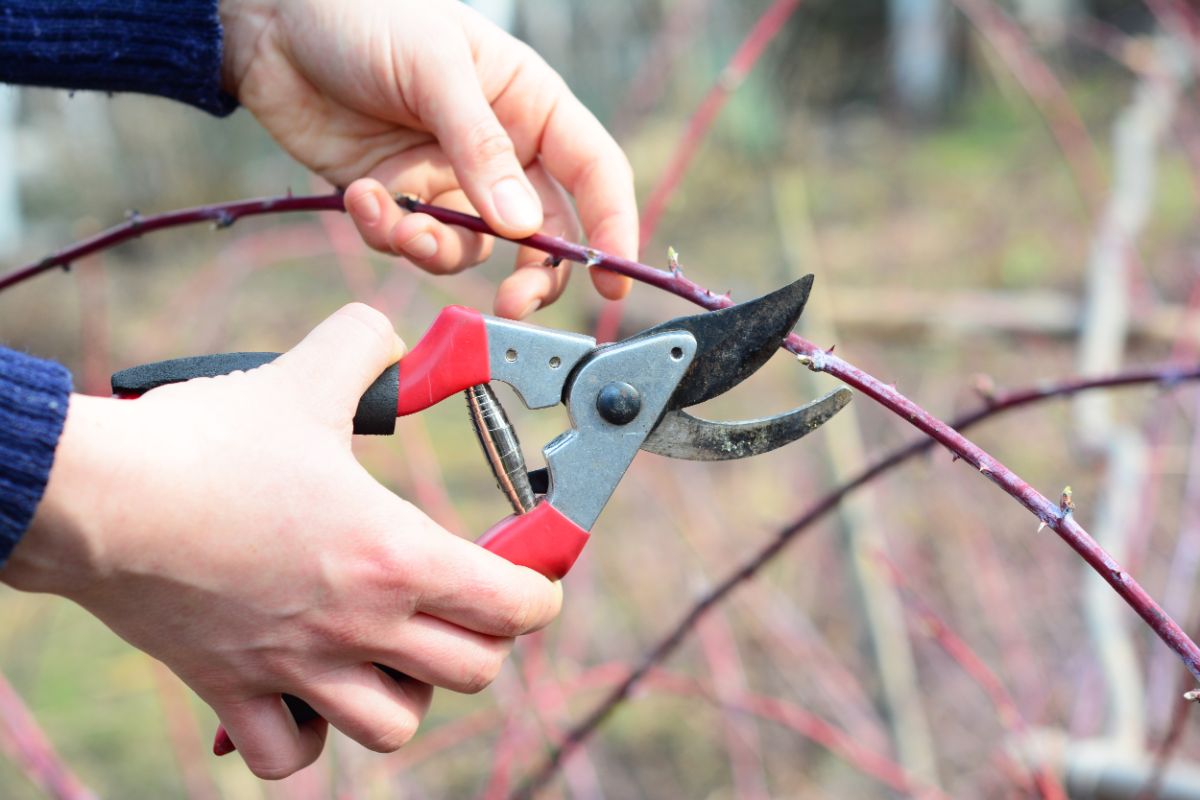
Blackberries can be grown in your garden, although they also readily sprout in the wild, and they’re a common foraging food. But if you love weaving, brambles from blackberries and other cane fruit can be used for basket making too. You’ll just want to wear tough gloves when harvesting them to avoid their prickly thorns!
The younger, flexible canes from blackberry plants are ideal for basket making. After harvesting, simply run the canes against a piece of sturdy canvas, and the plant’s thorns should fall away, leaving you with your cleaned weavers. The easiest way to start a blackberry basket is to use 6 sturdy canes as overlapping spokes and then lash them together with another flexible cane and begin weaving.
15. Virginia creeper (Parthenocissus quinquefolia)
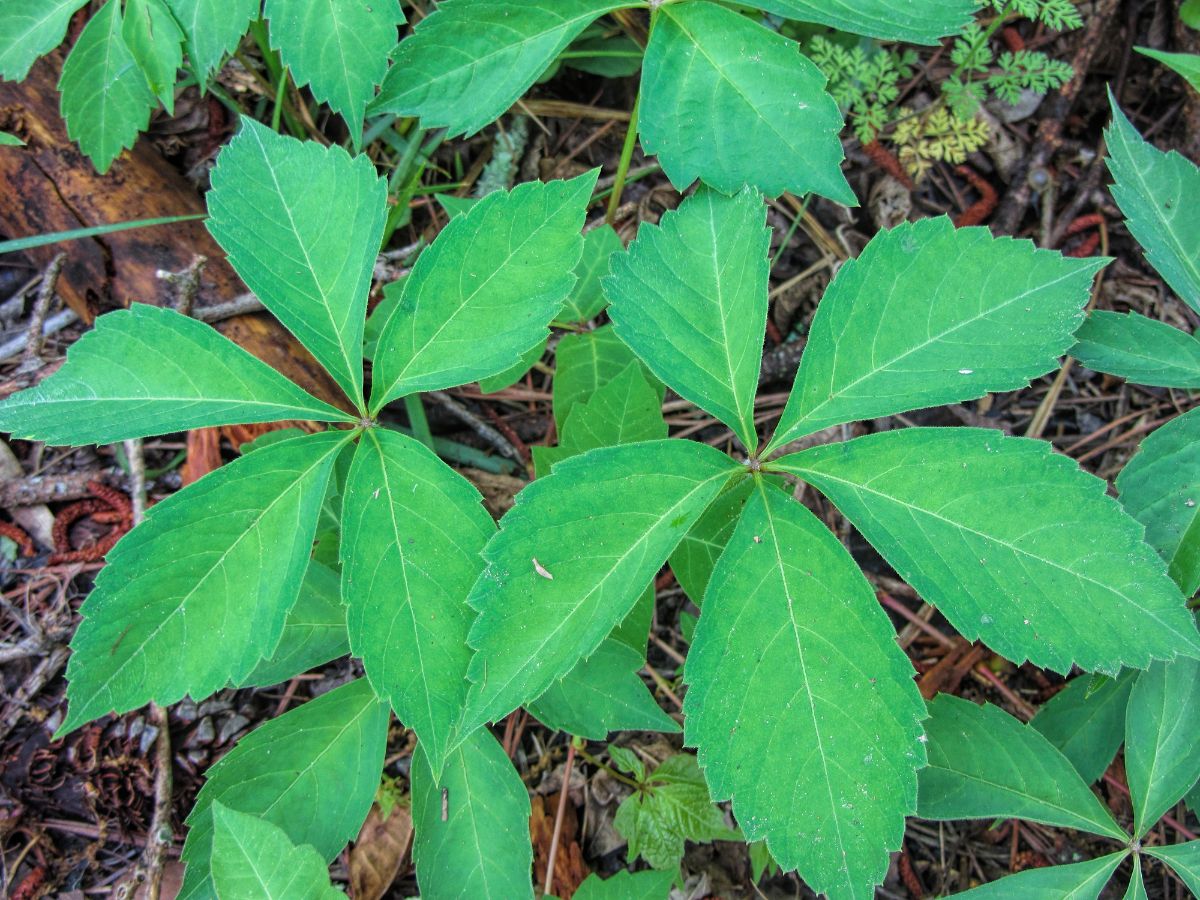
Virginia creeper is often mislabeled as an invasive plant; however, it is native to Central and North America. This vining plant is sometimes grown as a groundcover for weed suppression, but it can also be trained to grow up walls where its vibrant autumn leaves will show to their fullest. Plus, the Virginia creeper is a host plant for sphinx moths, and its vines are ideal for basket weaving too!
Before harvesting Virginia creeper, it’s important that you know how to properly identify it. Unfortunately, Virginia creeper is often confused with poison ivy, but unlike poison ivy, Virginia creeper has 5 leaves, not 3. Also, keep in mind that some sensitive individuals can develop rashes after working with Virginia creeper, so it’s best to avoid this plant if you’ve ever reacted to it in the past.
Quick tips on foraging for basket-making materials
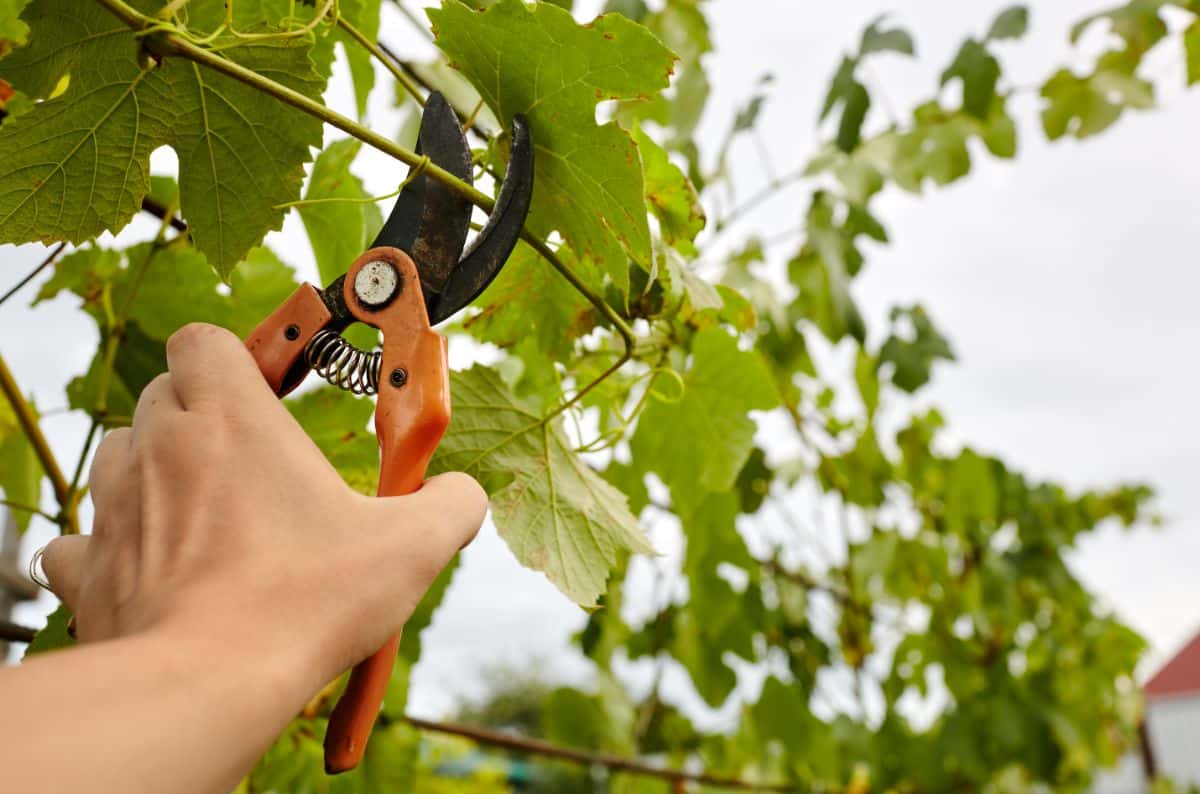
Many different basket-making materials can be foraged from the wild. However, whether you’re foraging for food or crafting materials, it’s always important to follow a few simple foraging rules.
- Get permission.
If you’re lucky, you may already have basket-making materials growing in your garden. But if you need to forage for your basket weavers, make sure you get the “okay” from whoever owns the property. Foraging on public lands may also require a permit, so always double-check the rules in your locale before you gather any plant materials.
- Wear gloves.
Woody vines can leave splinters in your fingers when gathering them, and bramble canes are thick with thorns that can tear your skin. Virginia creeper can also sometimes cause rashes. To avoid this, always wear gloves when foraging!
- Bring along a plant ID book.
If you’re new to foraging, you may want to invest in a good plant ID book. This will help you differentiate Japanese honeysuckle from native honeysuckle varieties, and it will also ensure that you don’t accidentally pick poison ivy on your hunt for Virginia creeper!
- Don’t overharvest.
When foraging in the wild, it’s always important to have respect for our surroundings and to remember that we’re just one part of an ecosystem. Birds, insects, and other wildlife often depend on native plants for food, shelter, and survival. That’s why the golden rule of foraging is to never harvest more than 10% of the plants you find.
- Know when to harvest.
Different materials are harvested at different times of the year for basket making. For example, woody vines are usually picked in winter; however, grasses, irises, and daylilies are generally gathered in summer or fall.
- Watch for dead limbs.
If you’re collecting vining plants from trees, beware of dead limbs. Tugging too hard on a vine may cause a dead limb to fall, which can be a major foraging hazard!
- Leave no trace.
Not overharvesting plants is one important part of “leaving no trace.” But this foraging rule also reminds us to take anything we brought with us when we leave the woods, including plastic bags, water bottles, and other trash. If you’re gathering invasive materials, like bittersweet, also make sure you take all the plant debris you collected with you, and you don’t accidentally scatter invasive seeds and berries in the environment.
Frequently asked questions
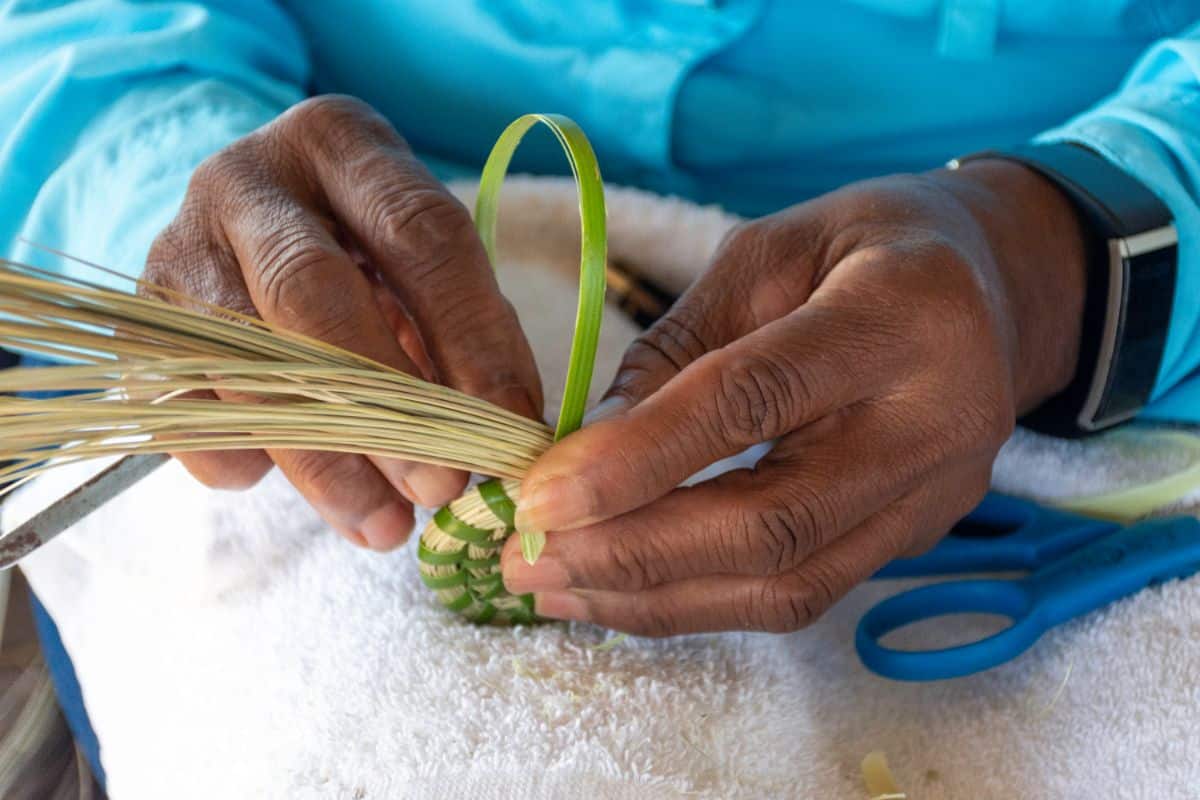
Many different plant materials can be foraged for homemade basket making. Most often, vining plants are the best choices for basket weaving, but plants with slender, grass-like leaves and cane fruit can also be woven. Some of the most traditional basket weaving materials include rushes, willow, pine needles, sweetgrass, and grape vines.
What grass is best for weaving really depends on your personal preferences and what grasses are native to your growing region. Beargrass, sea grass, and Kauna grass are commonly used for basket weaving. The sweetgrass baskets of the Lowcountry, South Carolina, are traditionally made from sweetgrass (Muhlenbergiafilipes) and palmetto fronds.
Most baskets are created either with coiling, plaiting, twining, or weaving. Coiled and plaited baskets usually use short and flexible materials, such as grasses and pine needles. Twined baskets are generally crafted with very flexible materials too, while woven baskets are typically made from sturdier plants, like grape vines and willow.
Plaiting is generally considered to be the easiest basket-making technique to master. However, if you’re new to basket weaving, don’t be intimidated by other basket weaving methods. Basket weaving is a very forgiving art, and practice does make perfect!
Most baskets are made from plant materials as they are readily available and easy to work with. Baskets can also be made from upcycled plastic bags, old newspapers, paper shopping bags, or fabric scraps.
Wicker and willow are two names for the same thing! Wicker baskets are made from willow. The difference is that ‘willow’ usually refers to the plant or the raw material, while ‘wicker’ refers to the finished basket.
Summary
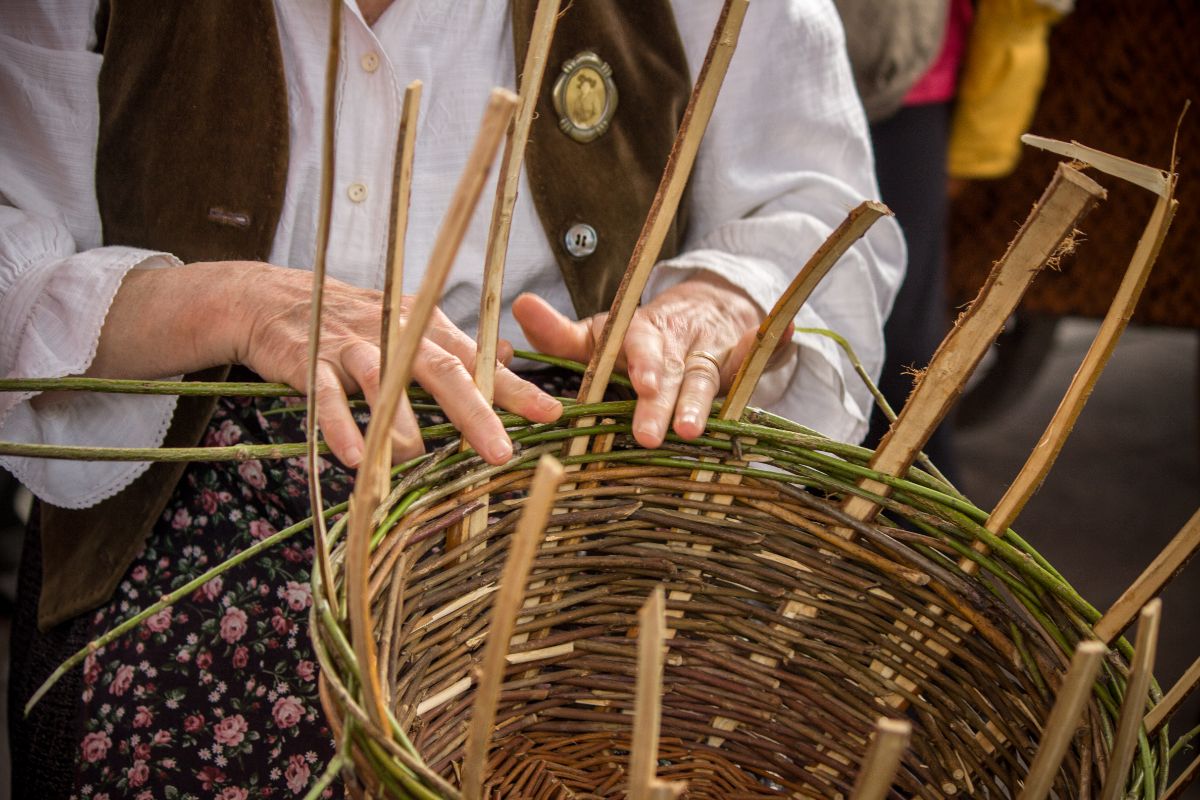
Foraging for our own craft supplies encourages us to get outside in nature and to explore the plants around us with a more careful eye. Will these vines hold a basket shape just right? Are these pine needles long enough for basket coiling?
There is so much to learn from the natural world, and allowing our crafty side to get inspired by the environment can expand our creativity and fire up our imaginations. Foraging for vines and plants for basket weaving is one great way to do just that. But if you want even more foraging inspiration, check out our guide on the best edible weeds to gather in your backyard and try some new recipes in the kitchen too!

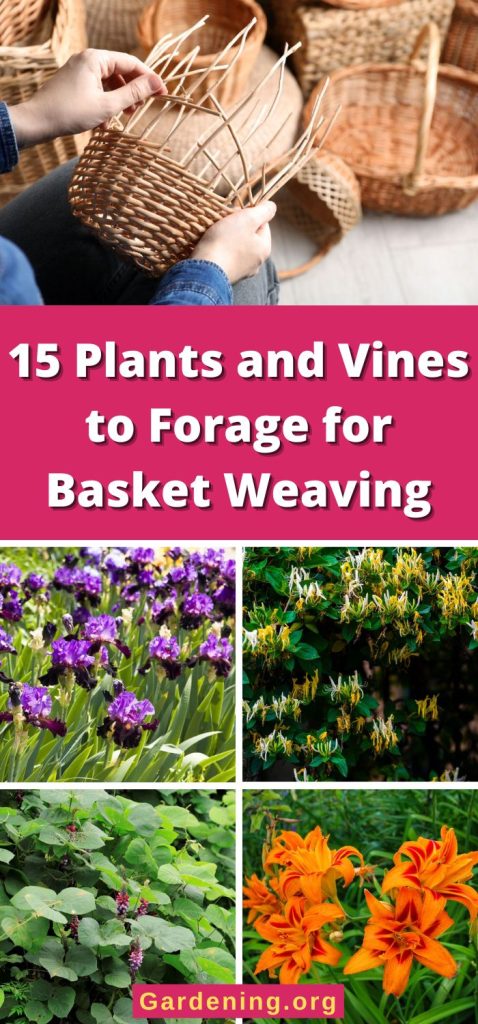
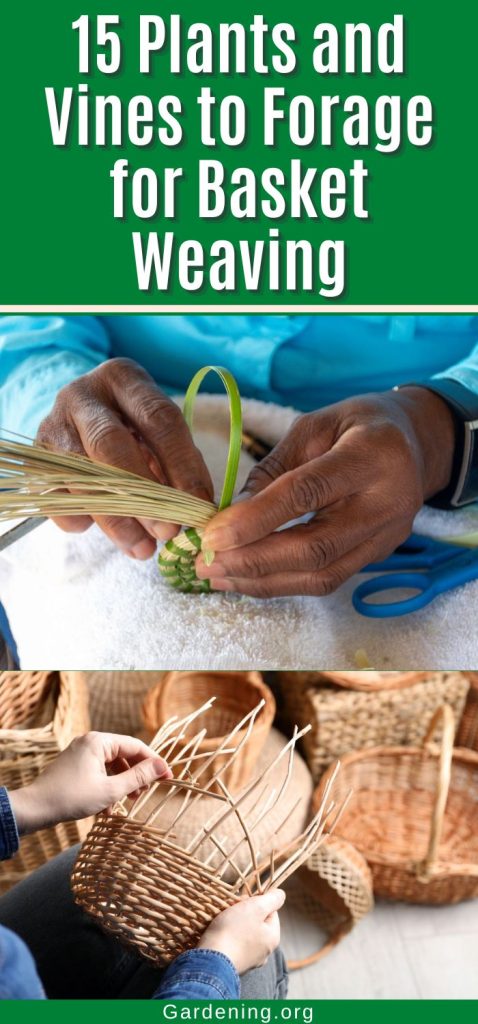
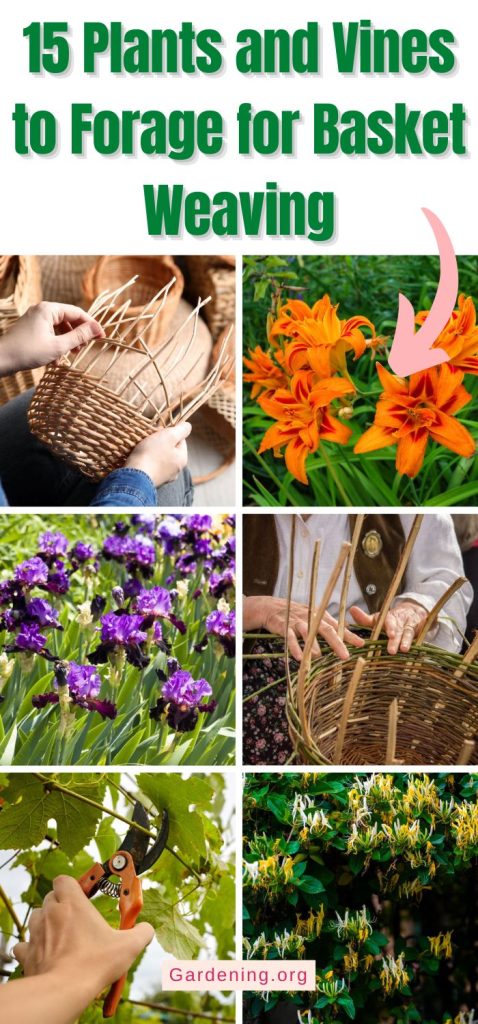


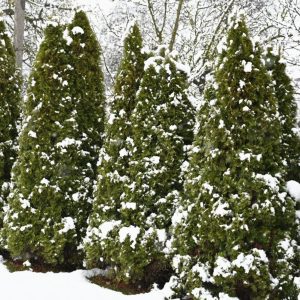


Qimba
Can phragmites be processed and used like cattail leaves?